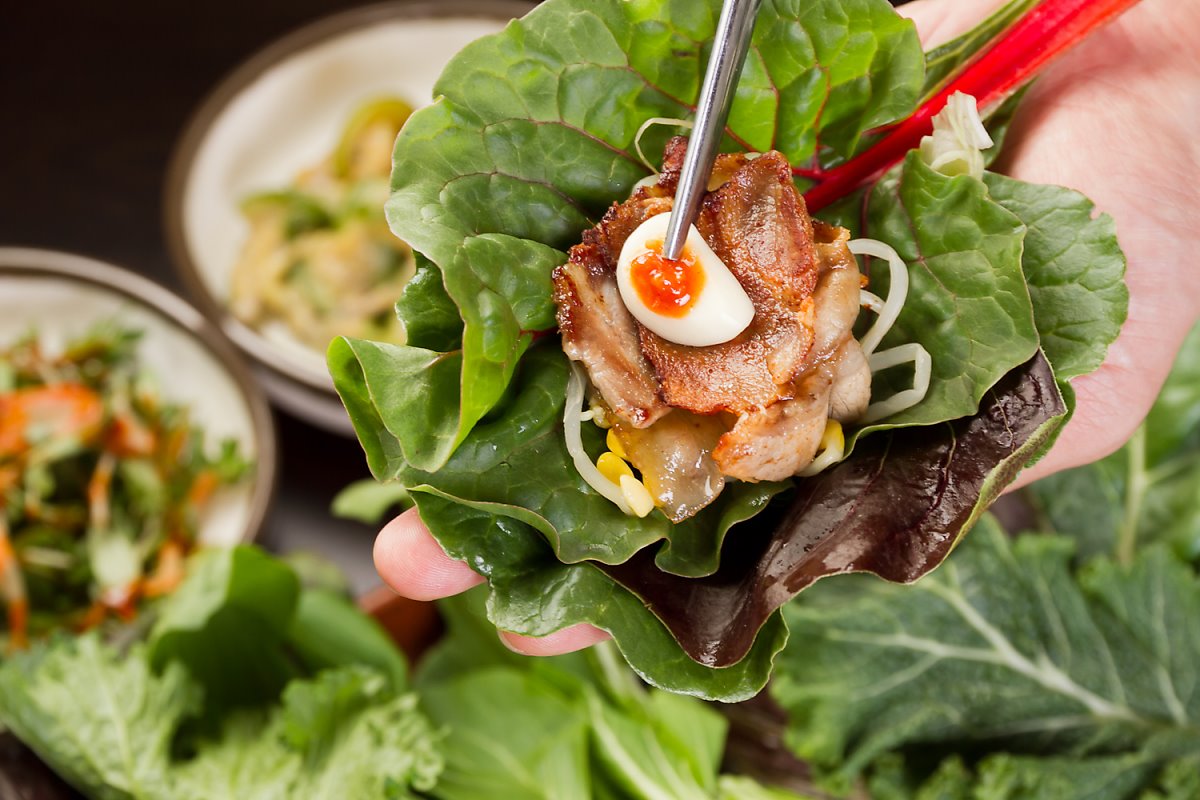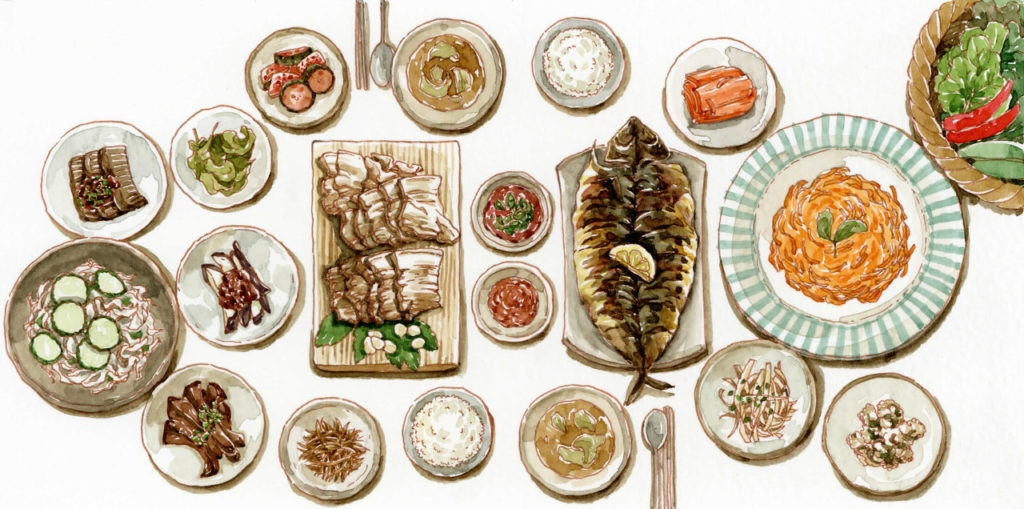
Ssambap, which literally means “rice with leaf wraps,” comes in many forms. Koreans who enjoy ssam make it with a variety of ingredients including rice, meat, sashimi, and even grilled pork rind wrapped inside virtually any vegetable, regardless of size or shape, that is physically able to be wrapped. Ssam originates from the story about Goryeo women taken hostage by the Yuan after the Goryeo defeat in battle against the Mongols. They woman were kept in a palace and to ease homesickness ate rice wrapped in lettuce that they had grown in the palace yard.
- Book Your Custom Private Korean Food tour
- Book Your Real KPOP activities & Concerts
- Dokkaebi(Goblin) Shooting Location Day Tour – Seoul Area
- Descendants Of The Sun + DMZ Tour
In the late Joseon Dynasty, ssam became a seasonal food eaten on the 15th day of the lunar year as a symbolic gesture of wrapping and eating fortune. The Ssam enjoyed by the royal family had a wide variety of fancy fillings, including stirfried julienned beef, pomfret boiled down in gochujang soup, stir-fried miniature shrimp, and gochujang stir-fried with ground meat, sesame oil, pine nuts and other ingredients. Today, ssam can be enjoyed year round thanks to the abundance of availability ssam wraps such as lettuce, perilla leaves, mugwort, cabbage and kale, as well as a wide variety of vegetables, mountain namul, and seafood. In southern regions, anchovy jeotgal (in Gyeongsangnam-do Province), damselfish jeotgal (on Jejudo), and boiled down anchovy or sardines are used in ssam instead of gochujang.
Contents by Korean Food Foundation
